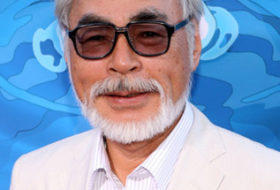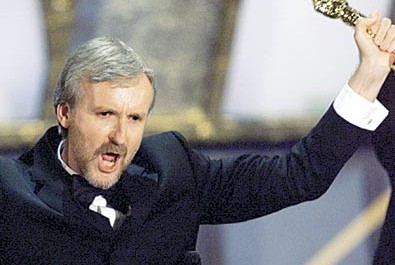Send Entries To: directorschairlamb@gmail.com
Deadline: 17th September 2022
Hello everyone, it’s time to announce the featured director for this months Director’s Chair and, with Princess Mononoke winning Movie of the Month, I’ve decided to highlight the work of Hayao Miyazaki.
Miyazaki got his start in animation at Toei in 1963, working as an in-between artist on some of their works, along with becoming the chief secretary of Toei’s labour union. Whilst at Toei, he developed strong working relationships with Isao Takahata and Yasuo Otsuka. After working at Toei, and later, Nippon Animation, he moved over to Telecom Animation Film where he directed his first feature, The Castle of Cagliostro, a film in the Lupin III series. After this, he intended to make an adaptation of the Richard Corben comic Rowlf, but, when he couldn’t secure the rights, he started writing an original manga series, Nausicaa of the Valley of the Wind. The success of the manga led to Miyazaki turning it into a film, which helped to cement Miyazaki’s reputation, and contributed to the founding of Studio Ghibli.
At Ghibli, Miyazaki directed his third film, Castle in the Sky, which ended up being the highest grossing animated film in Japan in 1986. Miyazaki’s next film, My Neighbour Totoro, was released alongside Takahata’s Grave of the Fireflies, in order to support the finances of Ghibli, although the duel production was chaotic for the animators. Whilst My Neighbour Totoro was a critical success it was not a commercial success, although its reputation has grown over time and has become a cult classic, with the merchandise for the film selling well (with it being referenced in Toy Story 3) and there is set to be a stage adaptation this year at the Barbican Theatre in London, with puppet work by the Jim Henson Creature Shop.
In 1987, Miyazaki gained the rights to the novel Kiki’s Delivery Service to adapt. Whilst he didn’t originally intend to direct it himself, he wasn’t satisfied with the original work on it and took it over. When it was released, it was another success, being the highest grossing film in Japan in 1989.
After this, Miyazaki adapted another one of his manga, Hikotei Jidai, into the film Porco Rosso. Originally intended to be an in-flight film only, and premiering as such, and having a more sombre tone than originally intended, whilst Miyazaki felt the film was foolish (and apparently his preferred version is the French dub with Jean Reno), it was another critical and commercial success.
Miyazaki’s next film is the one that helped put Miyazaki on the map outside of Japan, Princess Mononoke. When it premiered in Japan, it became the first animated film to win the Japan Academy Prize for Picture of the Year and was the highest grossing film in Japanese history for a few months, until being toppled by Titanic. It also played to success at the New York and Toronto film festivals, with Miramax Films buying the rights to distribution and hiring Neil Gaiman to write the English translation, although there were heavy tensions between Miyazaki and Harvey Weinstein, with Weinstein wanting to institute heavy cuts, resulting in Miyazaki sending a sword to Weinstein with the message ‘no cuts’ on it. It was not a commercial success in America but ended up serving as an introduction to Miyazaki’s films to Western audiences.
Miyazaki next decided to direct a film focused towards young women, creating a heroine they could look up to. The resulting film, Spirited Away, is easily Miyazaki’s most successful film. It became the highest grossing film in Japan, holding the record from 2002 to 2020 when it was toppled by Demon Slayer: Mugen Train, along with winning the Oscar for Best Animated Film and the Japan Academy Prize for Picture of the Year. It has also been ranked as one of the films to watch before you turn 14 by the BFI and was voted the fourth best film of the 21st Century so far in a BBC poll in 2016 and remains a heavy influence on modern animation.
Miyazaki then turned to another adaptation with Howl’s Moving Castle. Like other films of his, Miyazaki originally didn’t intend to direct this but internal issues led to Miyazaki taking over. It was another critical and commercial success on release, being nominated for the Oscar for Best Animated Film.
After a few other projects had issues, such as an adaptation of Ursula K. Le Guin’s Earthsea series that ended up being stalled and was eventually directed by Miyazaki’s son, he returned to film with Ponyo. Initially inspired by The Little Mermaid, it took on its own life during the course of production, creating a more innocent film, with the main character inspired by Miyazaki’s son. It was another critical and commercial success, and is one of the highest grossing films in Japan.
During this time, Miyazaki co-wrote the scripts for From Up on Poppy Hill and Arrietty and planned a sequel to Ponyo but he returned to directing with The Wind Rises. Adapted from another manga of his, based on the life of plane designer Jiro Horikoshi. This was another critical and commercial success and was the last film Miyazaki made for several years.
During his hiatus, Miyazaki continued to work on displays for the Studio Ghibli museum and was awarded the Academy Honorary Award in 2014. He also developed the computer animated short Boro the Caterpillar, which was only available to view at the Ghibli museum. Miyazaki came out of retirement in 2016 with his upcoming film How Do You Live. As of 2020, the animation was halfway done, but currently there is no set time for when the film will be released.
As a reminder, the films of Miyazaki’s you can cover are listed below.
- The Castle of Cagliostro
- Nausicaa of the Valley of the Wind
- Castle in the Sky
- My Neighbour Totoro
- Kiki’s Delivery Service
- Porco Rosso
- Princess Mononoke
- Spirited Away
- Howl’s Moving Castle
- Ponyo
- The Wind Rises
I look forward to reading what you send me.





Use our IELTS Band Score Calculater to calculate your Band Score
What Does GMFU Mean